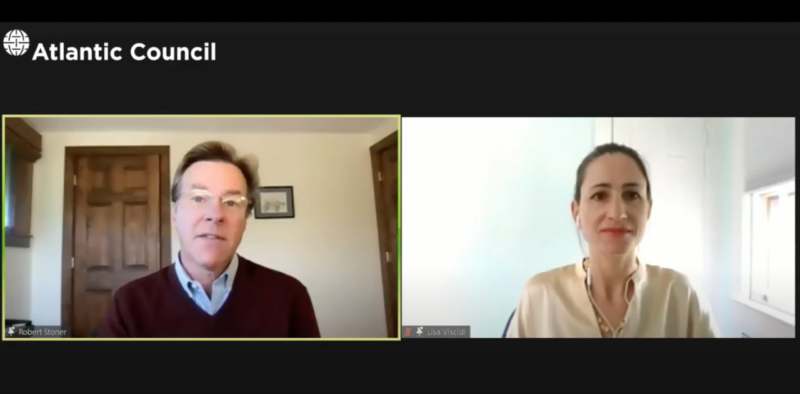Bolivia & the Global Fight Against Climate Change
In the past year, the Bolivian government has emerged as an outspoken critic of climate change policies.
On June 14, the Atlantic Council and the Energy Futures Initiative held a webinar on the role of natural gas in the transition to zero-carbon energy systems. Lisa Viscidi, director of the Energy, Climate Change & Extractive Industries Program at the Dialogue, spoke about financing natural gas infrastructure in Latin America.
"In Latin America, the share of natural gas in the energy mix is expected to grow as the share of hydropower declines and gas is used as a firm energy source to complement rising generation from wind and solar. As a region, Latin America has the cleanest power sector in the world because around half of its installed capacity is hydropower, although the total figure is distorted by several large markets where 70 percent to 80 percent of installed capacity is hydropower, such as Brazil and Colombia. Other countries like Mexico and particularly Caribbean nations have much less hydropower, and natural gas offers the possibility to replace higher emissions and more expensive oil for power generation. In any case, little new hydropower capacity is expected to be built, mainly because local populations are opposed due to the environmental and social impacts, and because of concerns about reliability as climate change shifts hydraulic patterns in South America."
"Natural gas is expected to meet much of the new demand. While the electrification rate on average for the region is over 90 percent, electricity demand is still growing in tandem with economic growth. Many countries are still seeking to expand natural gas markets and infrastructure for power generation, industrial use, and heating. Countries like Brazil and Argentina have large domestic gas resources and are looking to expand the domestic market in order to monetize this gas and even export it. In my opinion, these countries don’t seem too concerned about natural gas infrastructure becoming stranded assets. Rather, the main challenge to expanding much-needed gas infrastructure, as well as renewables and transmission lines, is the political and regulatory uncertainty."
"Financing is another big challenge. Multilateral development banks, national credit agencies, and Chinese development and commercial banks are investing in renewable energy and transmission infrastructure, though less and less in hydropower and natural gas because they are not seen as environmentally friendly. In recent years, China’s investments have shifted more to advanced technologies, particularly 5G and telecommunications in general. However, Chinese companies continue to be large players in the energy sector in certain Latin American countries, for example the oil sector in Ecuador, the mining sector in Peru, and the power sector in Brazil and Peru. This financing for renewables and transmission helps but is not enough and most of the funds need to come from the private sector. The pandemic has only weakened government coffers. They can’t afford tax incentives but need private capital. For countries with poor credit ratings like Argentina and some Caribbean countries it’s very difficult to attain financing from international capital markets for any type of energy infrastructure."
[…]
In the past year, the Bolivian government has emerged as an outspoken critic of climate change policies.
As global temperatures continue to rise with the global community stalled on any way to stop them, countries must prepare to adapt to increasingly volatile environmental conditions.
As the global financial crisis continues to alter US relations with the hemisphere, greater engagement in the region remains critical to US interests.
 Atlantic Council / YouTube
Atlantic Council / YouTube